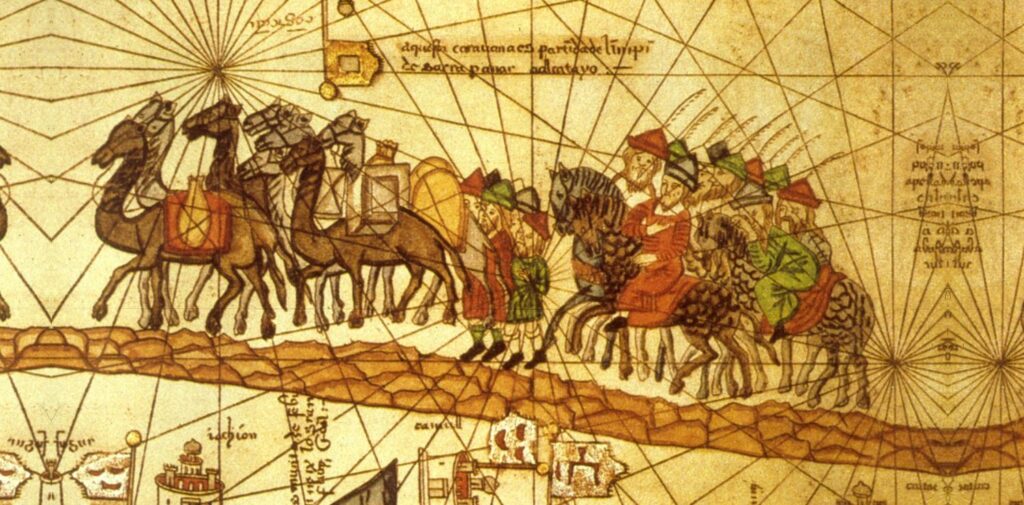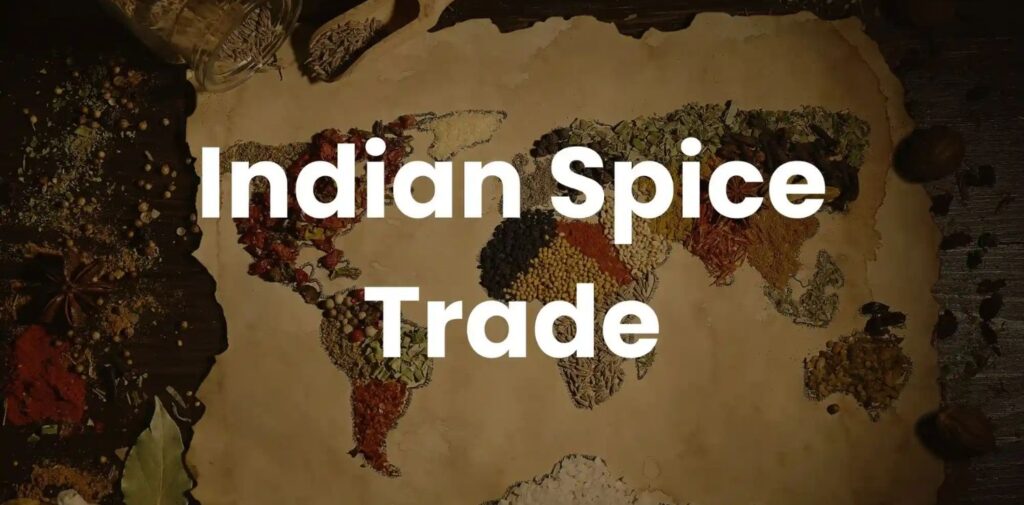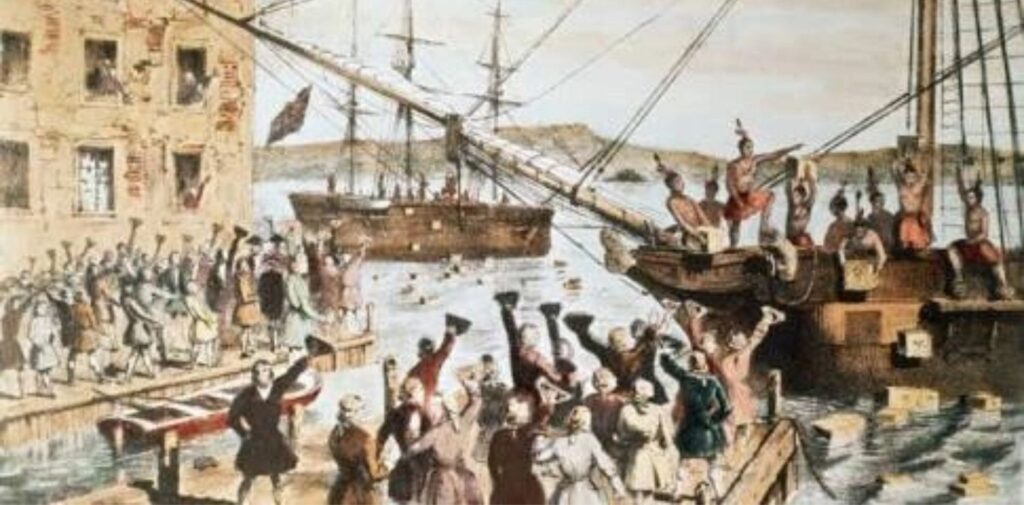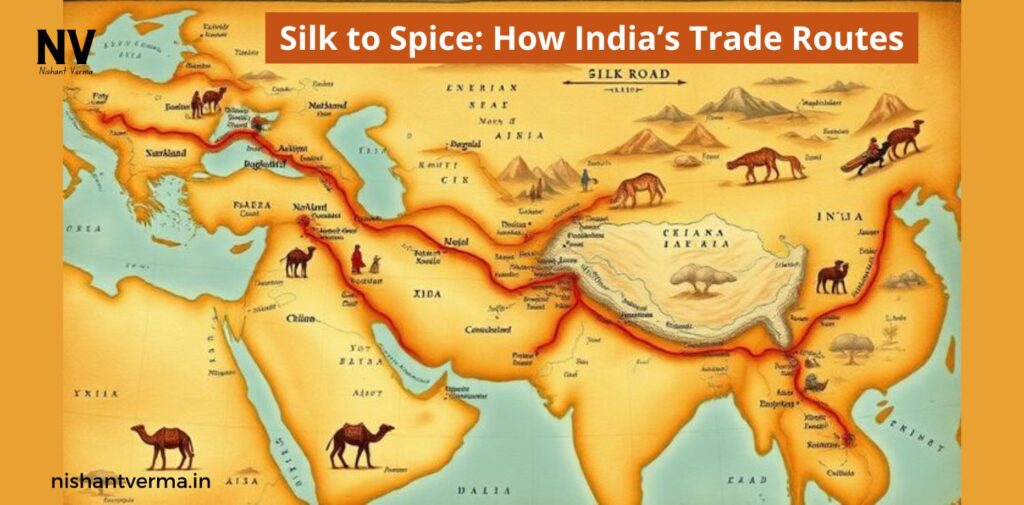India has long been a key player in global trade, a land rich in resources, culture, and innovation. For centuries, its strategic position in South Asia has connected it to the rest of the world through a network of trade routes, making it a centre of commerce, culture, and exchange. From the ancient trade of silk to the spicy treasures of its tropical lands, India trade routes have had a profound impact on shaping global history. This article explores how India’s position in the world’s trade networks has influenced the development of civilizations and the spread of ideas, goods, and cultures across continents.
Importance of India’s Geography
India’s location has always played a significant role in its position as a hub for trade. It is strategically placed between the East and the West, surrounded by the Indian Ocean to the south, the Himalayas to the north, and vast plains and deserts to the west and east. This location made it an important crossroads for travellers, merchants, and invaders alike, linking the cultures and economies of Central Asia, the Middle East, Africa, and Southeast Asia.
India’s coastlines along the Indian Ocean provided access to maritime trade routes that connected the region with the Arab world, Africa, and Southeast Asia. On land, the ancient Silk Roads, which stretched across Asia to Europe, passed through India, making it a key point in global trade.

Ancient Silk Road and India’s Role in Trade
The Silk Road was a network of trade routes that connected China with the Mediterranean world. This ancient route, which started as early as the 2nd century BCE, was not just one road but a series of interconnected paths that facilitated the exchange of goods, ideas, and cultures across Asia, the Middle East, and Europe.
India played a crucial role in the Silk Road trade network, acting as both a source and a middleman for a wide range of products. Indian merchants traded goods such as spices, textiles, precious stones, pearls, and ivory. In return, they imported products like silk, porcelain, and paper from China and glassware and wine from the Mediterranean regions.
One of the most important commodities that India provided was spices, including black pepper, cardamom, and cinnamon. These spices were highly sought after by traders from the Roman Empire, the Arab world, and later by Europeans. Indian merchants were responsible for transporting these valuable goods over long distances, making spices a major driver of India’s influence in global trade.
India Spice Trade: The Quest for Flavor and Wealth
India spice trade is one of the most famous chapters in the history of global commerce. Indian spices, particularly black pepper, cardamom, and cloves, were prized for their flavour and medicinal properties. These spices were in high demand not only in the Middle East and Europe but also in Southeast Asia, where they were used in cooking, perfumes, and even medicine.
The Malabar Coast, located on the southwestern tip of India, became a vital centre for the spice trade, with Indian traders sailing across the Arabian Sea to the ports of Arabia and beyond. The Middle East played an essential role in the spice trade by acting as a bridge between India and Europe. From there, spices were transported across the Mediterranean and into the markets of Europe, where they became a symbol of luxury and wealth.
The desire for Indian spices also had a significant impact on European exploration. In the 15th and 16th centuries, European powers such as Portugal, Spain, the Netherlands, and later England, embarked on voyages to find direct sea routes to India to control the lucrative spice trade. This led to the discovery of new trade routes, the establishment of European colonies in India, and the growth of European influence in Asia. The search for spices thus played a crucial role in the Age of Exploration, a period that reshaped world history.

The Role of India in Maritime Trade
India’s location along the Indian Ocean made it an important maritime power in ancient times. Indian sailors and merchants were skilled in navigating the seas, and they developed sophisticated techniques to travel long distances. Indian ships, known as dhows, were used for trade across the Indian Ocean, connecting India with East Africa, the Arabian Peninsula, Southeast Asia, and even China.
The Chola Dynasty, which ruled southern India from the 9th to the 13th centuries, played a significant role in expanding India’s maritime trade. The Cholas established a vast network of sea routes that reached as far as Southeast Asia and the islands of the Pacific. Their naval power and trading influence helped spread Indian culture, religion, and goods to far-flung regions.
Indian merchants also established settlements along key trading hubs, such as Malacca in Southeast Asia and Zanzibar off the coast of East Africa. These settlements not only facilitated trade but also became centres of cultural exchange, where Indian culture, language, and religion mixed with those of local populations, leaving a lasting impact on the regions.
Land Routes: From the Silk Road to the Grand Trunk Road
While maritime trade routes were vital, India was also deeply connected to land-based trade routes, such as the Silk Road and the Grand Trunk Road. The Grand Trunk Road, one of the oldest and longest roads in Asia, stretched from Bengal in the east to Kabul in Afghanistan, passing through northern India and central Asia. This route was an essential passage for traders moving goods from India to Central Asia, Persia, and beyond.
The Silk Road, which passed through India, was instrumental in the exchange of ideas, technology, and goods between East and West. Indian traders and scholars contributed to the cultural and intellectual exchange along these routes. Indian religions, including Buddhism and Hinduism, spread along the Silk Road, influencing regions as far away as China and Central Asia. Indian art, architecture, and science also reached these regions, leaving a lasting impact.
Mughal Empire and India’s Global Trade Network
The Mughal Empire, which ruled India from the 16th to the 19th centuries, further strengthened India’s position in the global trade network. Under the Mughals, India became a prosperous centre for both domestic and international trade. Indian textiles, particularly cotton, became highly sought after, with the Mughal Empire exporting vast quantities of fabrics to Europe, the Middle East, and Southeast Asia.
The Mughals also expanded the road and river networks within India, making internal trade more efficient and linking the country to international markets. The empire’s capital cities, like Delhi and Agra, became thriving centres of commerce, culture, and intellectual exchange.

The Colonial Impact and the Modern Trade Network
The arrival of European colonial powers in India in the 17th and 18th centuries brought dramatic changes to the region’s trade networks. The British, Dutch, and French established control over key parts of India’s coast and internal trade routes. India’s export economy shifted, as the British East India Company became the dominant trading power, especially in goods like tea, cotton, and jute. The British used India as a crucial part of their global trade network, connecting it to the wider world economy.
However, British colonial rule also led to the exploitation of India’s resources and trade routes. India’s vast potential for commerce and industry was often undercut by colonial policies that focused on extracting raw materials for the benefit of Europe. Despite this, India remained a critical link in global trade networks, particularly in its export of textiles, spices, and raw materials.
Conclusion: India trade routes
India trade routes have played a crucial role in shaping global history, from the ancient Silk Road to the spice trade, and maritime routes to the influence of the Mughal Empire. India’s role as a crossroads of trade and culture has had a lasting impact on civilizations across the world. Through these trade routes, India not only exchanged goods but also ideas, technologies, and religions that helped shape the course of global history. Today, the legacy of India’s trade networks continues to be felt as the country remains a significant player in global commerce and cultural exchange.




